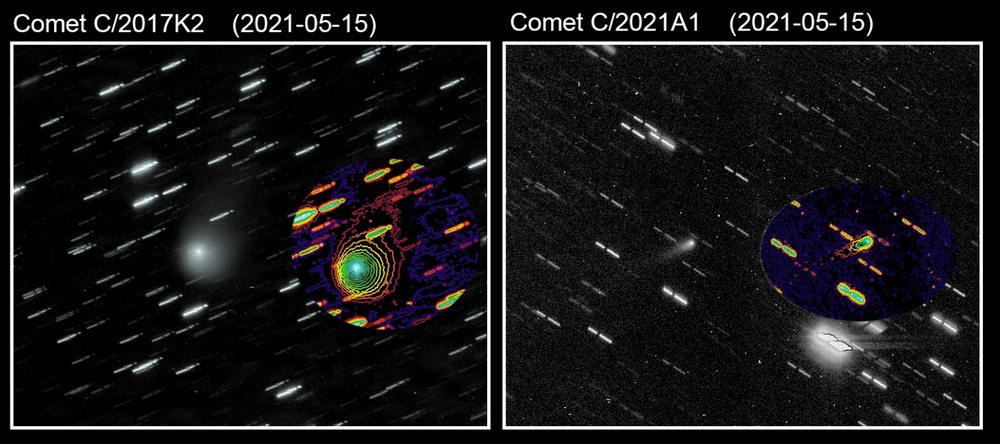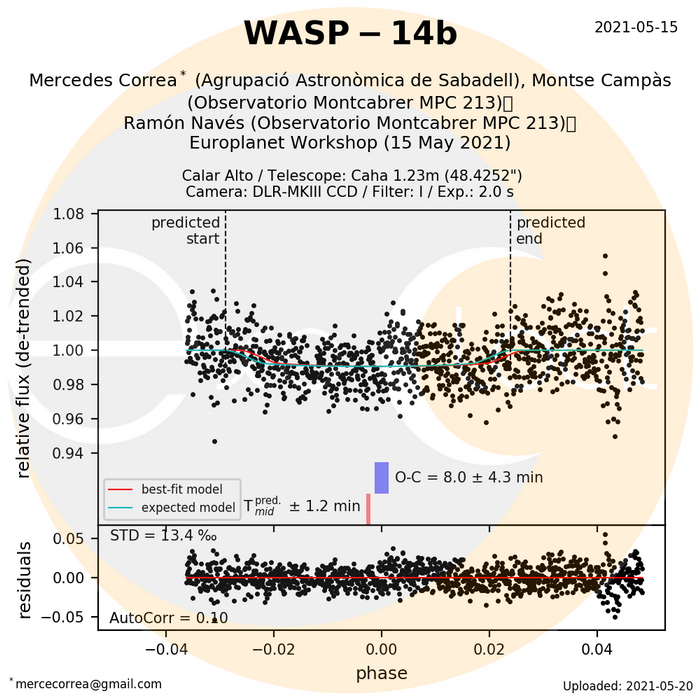Virtual Workshop on the use of the Europlanet Telescope Networkfor amateur astronomers: An experience from the Spanish-Portuguese hub of the Europlanet Society
- 1Dpto. Fisica Aplicada, Escuela de Ingeniería de Bilbao (UPV/EHU), Bilbao, Spain (itziar.garate@ehu.eus)
- 2Europlanet Society, Spain & Portugal Regional Hub
- 3Federación de Asociaciones Astronómicas de España
- 4Instituto de Astrofísica e Ciências do Espaço (IA), Portugal
- 5Science Group, Pamplona Planetarium, Spain
- 6Observatorio Montcabrer; ASTER
- 7Agrupación Astronómica de Sabadell
- 8Space Research Institute, Austrian Academy of Sciences, Graz, Austria
Europlanet 2024 RI is a Research Infrastructure funded by the European Commission from Feb. 2020 to Feb. 2024 to enhance collaborations among planetary scientists through Europe by providing networking activities, virtual services and access to research facilities. One of the activities of the RI is the Europlanet Telescope Network (ETN), a program to fund access and costs of use to a network of telescopes for observations of Solar System objects and exoplanets. One of the goals of the network is to widen the participation of amateur astronomers in professional and amateur (pro-am) collaborations accepting proposals from amateur astronomers that are evaluated by a scientific committee on the scientific merit only.
Many amateur astronomers have a long-standing experience in astronomical observations and data analysis, can extract very valuable observations from the telescopes of the network and are part of large pro-am projects. However amateur astronomers have little to no experience in the subtleties of writing proposals. To counteract this disadvantage the project decided to organize a workshop on proposals writing that could inspire amateur astronomers and result in future successful proposals. The first of such workshops was organized as a virtual meeting on May 15, 2021 (Saturday) [1], in collaboration with the Spanish-Portuguese hub of the Europlanet Society [2], the Pro-Am Commission of the Spanish Society of Astronomy [3], and the Federation of Amateur Astronomical Associations of Spain [4]. Although the workshop was conducted in Spanish there were participants from France and Portugal, and some participants from South America.
Here we will show how we structured the workshop, the first one developed to publicise the ETN among amateurs and facilitate access for them in a practical way. We will also detail the positive results so far and the lessons learnt from this experience.
The workshop was structured in three main sessions: (1) A morning session with full details of the ETN and examples of pro-am collaborations (2 hours long); (2) An afternoon session dedicated to the ETN call and the proposal writing (4 hours); (3) A night-time session dedicated to remote observation that started at 9 p.m. and was extended from 1 a.m. (official closing time of the workshop) to 6 a.m.
In the first session, the Europlanet project and the telescope network were described, with emphasis on the closest telescopes most likely to be used by the Spanish amateur community. Several Pro-Am projects in which they could collaborate with their observations were also detailed. Special emphasis was given to projects embedded in Europlanet2024RI such as Gaia-GOSA [5] or ExoClock [6], and VESPA [7] and associated databases (such as PVOL [8]). Finally, several activities undertaken by the Pro-Am Commission of the Spanish Society of Astronomy were presented.
In the second session, the process of accessing the network was explained with the conditions to be fulfilled and the steps to be followed. Public information on the proposals granted so far were analysed and examples of studies that amateurs can perform with the telescopes of the network were shown, emphasising the scientific contribution of these observations. The open call and funding application form were explained in detail in a writing workshop. The scientific approach to be given to the whole funding proposal was highlighted and examples were given in all sections.
This session ended with a demonstration of remote use of one of the telescopes of the network: the 1.23m of the Calar Alto Observatory. The night session was organized around observations of objects previously proposed by the participants. These were the comets C2021A1 and C2017K2 (figure 1), the transiting exoplanet WASP-14b (figure 2), and we ended up with an observation of Saturn and 6 of its moons (figure 3).
The number of active participants was about 70 in all sessions and 15 of them stayed on until 6 a. m. They all said they like the initiative, the project, and being able to use these telescopes. For many amateurs the main drawback to prepare an application is the bureaucratic steps associated to the proposal. For others, a drawback is the perceived difficulties in using a large telescope and its instrument from the available documentation resulting in stiff learning curves. For most of them, the direct experience of using a 1-m class size telescope resulted in a very positive experience and some observers declared the workshop motivated them to prepare proposals to the network in the near future. We recommend to the rest of the Europlanet hubs to reproduce similar workshops in their regions which can boost not only the use of the ETN, but also the participation of amateur astronomers in varied pro-am projects.
Acknowledgements
Europlanet 2024 RI has received funding from the European Union’s Horizon 2020 research and innovation programme under grant agreement No 871149. We are very grateful to the Calar Alto Observatory for their good disposal and technical support.
References
[1] https://www.europlanet-society.org/virtual-workshop-on-the-use-of-the-europlanet-telescope-network-for-amateur-astronomers/
[2] https://spainportugal-eps.org/index.php/en/
[3] https://www.sea-astronomia.es/colaboracion-pro-am
[4] https://federacionastronomica.es/
[5] http://www.gaiagosa.eu
[6] https://www.exoclock.space/
[7] http://www.europlanet-vespa.eu/
[8] http://pvol2.ehu.eus/pvol2/

Figure 1: Comets C/2017K2 (left) and C/2021A1 (right). Data analyzed by Ramón Navès. Images are stacks of 25 (left) and 21 (right) exposures of 2 minutes in both panels. Brightness isolines are represented in the insets in color.

Figure 2: Lightcurve of exoplanet WASP-14b based on 2 seconds exposures. Data analyzed by Mercè Correa with the Hops program of the ExoClock project.
Figure 3: Saturn and moons. Single shot of 0.01 s near dawn.
How to cite: Garate-Lopez, I., Álvaro, J., Hueso, R., Gilli, G., Ordóñez-Etxeberria, I., Navès Nogues, R., Correa, M., Campàs, M., and Scherf, M.: Virtual Workshop on the use of the Europlanet Telescope Networkfor amateur astronomers: An experience from the Spanish-Portuguese hub of the Europlanet Society, European Planetary Science Congress 2021, online, 13–24 Sep 2021, EPSC2021-304, https://doi.org/10.5194/epsc2021-304, 2021.

